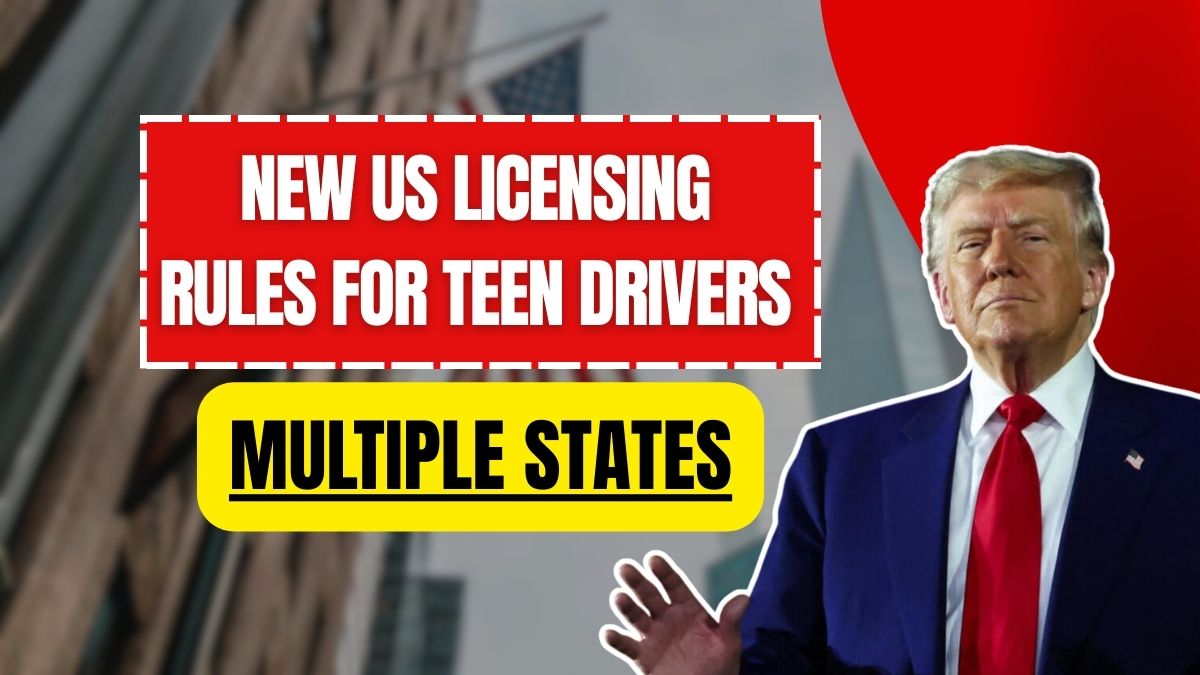A driving license is an important step for every teen, as it gives them a sense of independence, responsibility and a new freedom in everyday life. But from July 1, 2025, the licensing process has been made more stringent than ever in many US states, especially Florida, New Jersey and Washington. The main purpose of these changes is to improve road safety and provide adequate training to young drivers. However, these new rules have also increased challenges for both families and teens. Now getting a license is not just a formality but has become a long and expensive process.
The biggest change in Florida: In-person classes are mandatory instead of online.
Florida has implemented the strictest changes under Senate Bill 994. Earlier, teens aged 15 to 17 could complete the online Traffic Law and Substance Abuse Education (TLSAE) course from home. It was a 4-hour online course, which could be easily done from a computer or mobile.
But now the situation has completely changed. Starting July 1, 2025, the course will be in-person only. The new six-hour course will be completed at state-approved training centers. This means families will now face travel time, additional expenses, and the challenge of finding the right training center.
Process before and now
This change is not only time-consuming, but it can also put financial pressure on both parents and children.
| Step | Before (prior to July 1, 2025) | Now (from July 1, 2025 onward) |
|---|---|---|
| Training | 4-hour online course | 6-hour in-person course (state-approved) |
| Written Test | 50 questions | 50 questions (unchanged) |
| Vision & Hearing Check | Required | Required (unchanged) |
| Supervised Driving | 50 hours (10 at night) | 50 hours (unchanged) |
| Permit Holding Period | 1 year | 1 year (unchanged) |
| Cost | Lower (online option was cheaper) | Higher (in-person fees + travel) |
Strict supervised driving hours in New Jersey
New Jersey has also implemented new driving rules. Every driver under the age of 21 will now have to complete at least 50 hours of supervised driving before taking a road test.
Earlier, many families prepared their children for the test by giving them only minimal practice. But now the state wants to ensure that young drivers practice thoroughly to face all kinds of road and weather conditions.
This change brings New Jersey at par with states like California, Delaware and Idaho, which already mandated the same number of supervised hours.
Washington’s new experiment: Focus on older first-time drivers
The state of Washington has taken a very different and unique step. Here, attention has been paid not only to teenagers but also to those who get a driving license late.
Under a new law passed in May 2025, now all new drivers up to the age of 21 will have to take professional driving education compulsorily. In the coming time, there is a plan to implement it for people up to the age of 25 as well.
The reason for this is that many people delay getting a license due to their studies or other reasons. Such people are deprived of the benefits of the graduated licensing system. Washington believes that every new driver, whether he is 16 years old or 24 years old, should get professional training so that road safety can be improved.
How strict in which states? Comparison of supervised hours
The rules of every state in America are different. Some states are very strict and some are very flexible. Below is a comparison of some states:
| State | Minimum Supervised Hours | Notes |
|---|---|---|
| Maine | 70 hours | One of the strictest requirements in the country |
| Pennsylvania | 65 hours | Includes required night driving |
| Florida | 50 hours | In-person course now required |
| New Jersey | 50 hours | Mandatory for drivers under 21 |
| Washington | 50 hours | Also expanding requirements to older first-time drivers |
| Kansas | 20 hours | No mandatory night driving requirement |
| Arkansas | None | No supervised hours requirement |
This table shows that there is no national standard in America yet. This creates the problem that young drivers of some states are better trained and some hit the road with less experience.
Challenges faced by families: cost, time and distance
These new rules are affecting ordinary families the most. Especially people living in rural areas now have to travel long distances to reach the training center.
- Problem of rural families: There are very few government-approved training centers in small towns and villages. This means that families will have to travel for hours.
- Financial burden: Earlier online courses were cheaper, but now fees will have to be paid for in-person classes. Apart from this, travel expenses will also increase.
- Time issues: Working parents will now have to find time to attend classes with their children and complete supervised driving hours.
- Families with multiple children: Families with more than one teen will have to invest multiple fees and time.
Purpose of this change: Improve road safety.
While these new rules have put families in a spot, the idea behind them is clear. According to the CDC (Centers for Disease Control and Prevention), road accidents are still one of the leading causes of death among teens in the US.
Florida Senator Jay Collins, who introduced the bill, says that “structured and hands-on training better teaches teens about real road dangers, such as distracted driving, speeding and drunk driving.“
Supporters believe that in in-person classes, instructors can explain to teens with real examples, answer questions and guide them personally, which was not possible online.
What will happen in the future?
New laws in Florida, New Jersey and Washington indicate that the US is gradually moving towards making driving license rules more stringent.
Although there is no national standard right now, given the increasing pressure and importance of road safety, it is possible that in the near future there will be a nationwide standard.
For now, families need to carefully understand the rules of their state and plan in advance so that teens can complete all the steps without delay.
FAQs
Q. What is the new requirement for teens getting a license in Florida after July 1, 2025?
A. Teens must complete a 6-hour, state-approved in-person course instead of the previous 4-hour online course.
Q. How many supervised driving hours are required in Florida?
A. Teens must complete 50 hours of supervised driving, including 10 hours at night.
Q. Which state has the highest supervised driving requirement?
A. Maine requires 70 hours, making it one of the strictest states.
Q. Do all states have supervised driving requirements?
A. No, some states like Arkansas do not mandate supervised driving hours.
Q. Why are states making licensing rules stricter?
A. The goal is to improve road safety and reduce accidents involving inexperienced drivers.


